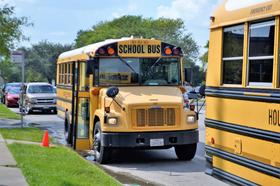Introduction
Standardized tests have long played a central role in U.S. K-12 and post-secondary educationŌĆöused for everything from measuring student progress to informing school accountability and shaping college admissions. As we enter 2025, the landscape for standardized testing continues to shift in meaningful ways. From digital test delivery and evolving college admissions policies to declining student proficiency and renewed questions about equity, the changes matter deeply for parents, students, educators and schools.
This article examines the current state of standardized testing in 2025: how policies have changed, what recent performance data show, how colleges are responding, and what practical steps families and schools can take to navigate this evolving terrain. In particular, we reference authoritative sources including the National Assessment of Educational Progress (NAEP) and federal education policy, and link to relevant resourcesŌĆöincluding one of our own reviews at Boarding School Review.
What We Mean by ŌĆ£Standardized TestsŌĆØ
ŌĆ£Standardized testsŌĆØ is a broad term that can refer to a variety of assessments administered under consistent conditions, with the goal of measuring student achievement or growth across different students, schools or jurisdictions. In K-12 settings this often includes state-level assessments (for example, in grades 3-8 and 11), diagnostic and interim assessments, and nationally-normed exams like the Scholastic Assessment Test (SAT) or the ACT in the college admissions context.
These tests serve multiple functions: measuring what students know and can do, informing instruction, enabling comparisons across schools or states, supporting accountability systems and guiding admission or placement decisions.
In 2025, several trends are reshaping standardized testing:
a shift from paper-based to digital delivery
reconsideration of test-optional versus test-required policies in higher education
increasing use of interim/adaptive assessment models rather than a single high-stakes exam per year
growing concern about downward trends in proficiencyŌĆöand what they mean for college and career readiness.
Policy & Landscape Update for 2025 Digital delivery and adaptive testing
One major change: the SAT is now fully digital in the U.S., after the transition completed in 2024. ČČę¶│╔╚╦ The digital format takes roughly two hoursŌĆöabout an hour shorter than the legacy paper versionŌĆöand uses adaptive features (where question difficulty adjusts) to provide a more tailored experience. For schools and districts, this shift means new logistical demands: devices, secure test environments, and technical readiness.
State assessment reforms and frequency
In March 2025, a report noted that some states (such as Oklahoma and Texas) were exploring a move away from once-a-year end-of-year state assessments toward more frequent (ŌĆ£three times a yearŌĆØ) assessments to give more timely feedback to educators.Meanwhile, federal pressure remains for states to retain standardized assessments under the Every Student Succeeds Act (ESSA) framework. According to education commentator Scott Marion, state assessments continue to be essential for monitoring student achievement, program evaluation and transparency.
College admissions and testing requirements
For students and families navigating college admissions, standardized testing policy remains in flux. While many institutions adopted test-optional policies during the COVID-19 pandemic, several selective colleges are now reinstating test-required policies for the 2025-26 cycle and beyond. For example, the database from Spark Admissions shows that about 79.7 % of the 588 colleges examined were test-optional or test-flexible for the class of 2025, leaving only about 5.8 % requiring SAT or ACT scores.The timeline-sensitive nature of these changes means students must check each schoolŌĆÖs policy.
Performance trends: What the data show
The NAEP results released in September 2025 paint a sobering picture: for high school seniors in 2024, only 35 % achieved proficiency in reading, and only 22 % achieved proficiency in math ŌĆö the lowest on record in each category.At the grades 3ŌĆō8 level, preliminary data from New York state for 2024-25 show proficiency rates of 53 % in ELA and 55 % in mathematics. The broader trend: student performance remains flat or declining in key subjects, underscoring the urgency for effective preparation, curriculum alignment and intervention.
Implications for Parents, Students & Schools For parents and students
Be aware of testing format and timing: With the SAT and other assessments moving to digital, studentsŌĆöespecially younger onesŌĆöshould become comfortable with the screen-based format, timed modules and adaptive sections.
Understand your schoolŌĆÖs assessment calendar: Many districts continue with traditional annual state tests, but some are piloting multiple assessments per year. Knowing when the tests occur helps families plan preparation schedules and monitor progress.
Check college admissions policies early: Because testing requirements are shifting, students should verify whether their target colleges require SAT/ACT scores, are test-optional, or have test-flexible policies. The admissions page of each institution is the definitive reference.
Focus on growth and readiness, not just test scores: Given the declining proficiency trends, families should emphasise foundational reading, writing and mathematics skills, rather than rote ŌĆ£test prepŌĆØ alone.
Discuss with high school students the meaning of score submission: For students applying test-optional, the decision to submit scores should depend on whether a strong score strengthens their application rather than being a default omission.
For schools and educators
Align instruction to assessment frameworks: Given the NAEP and state assessment results, schools may need to review how well curricula are aligned to standards and how effectively students are developing proficiency in core subjects.
Leverage interim assessments and data: Frequent assessments (whether district-level or state-mandated) can give educators timely insights into student readiness, enabling targeted interventions rather than waiting for a single end-of-year test.
Monitor device readiness and equity: With digital testing becoming the norm, schools must ensure reliable devices and internet access. Equity issues can arise if some students lack home devices or bandwidth.
Communicate transparently with families: Changing test formats, schedules and proficiency trends warrant clear communication. Families benefit from understanding what tests are being given, why, and how results will be used.
Real-World Example: A High SchoolŌĆÖs Approach
Consider Lincoln High School (a pseudonym) in a suburban district that piloted mid-year diagnostic assessments beginning in 2024-25. At this school:
Students in grades 6ŌĆō8 take shorter adaptive mathematics and reading assessments three times a year.
Teachers use the data to identify students lagging one or more grade-level standards and schedule targeted interventions by spring.
For high school juniors, the SAT is administered in digital format during class time, giving students real-world experience in the format. The school offers a ŌĆ£digital test readinessŌĆØ workshop that includes device check-out, practice questions and time-management strategies.
When students begin building college lists, the schoolŌĆÖs counselling office organises an ŌĆ£Admissions Testing UpdateŌĆØ session covering which colleges still require testing in 2025-26 and how to decide whether to submit scores.
This example illustrates how a school can respond proactively to the evolving standardized testing environmentŌĆöand partner with families to support student readiness.
Expert Insight
Dr Maria Lopez, Director of Assessment and Accountability at a mid-sized urban district, offers this advice:
ŌĆ£In 2025, weŌĆÖre not simply administering the same tests we used a decade ago. The shift to digital delivery, adaptive scoring and interim testing means that schools must rethink test-readiness as part of everyday instruction, not just a ŌĆścram before examŌĆÖ model. For students and families, that means building consistent habitsŌĆöreading widely, engaging with data, reflecting on what they know and donŌĆÖt knowŌĆönot simply practising test-drills.ŌĆØ
Dr Lopez adds that the declining proficiency data ŌĆ£should not discourage but rather prompt a reset. It is a call for earlier intervention, better monitoring and a stronger partnership between schools and families.ŌĆØ
Looking Ahead: What to Watch in 2026 and Beyond
Adaptive testing expansion: As digital platforms mature, expect more states and districts to adopt adaptive assessments, which respond in real time to student responses for more precise measurement.
Shifting college admissions policies: Some institutions that went test-optional may further refine their stanceŌĆöor reinstate testing altogether. Students entering high school now should assume the possibility that testing may be required, and be ready accordingly.
Stronger focus on equity: Given concerns that test-optional policies sometimes disadvantaged students who chose not to submit scores, there is growing interest in whether standardized tests help or hinder equitable access.
Integration of technology and AI: As generative AI tools continue to influence teaching and learning, questions arise about how standardized testing adaptsŌĆöboth in delivery and in assessing higher-order skills rather than rote fact recall.
Greater accountability around proficiency declines: With NAEP and state data showing marked drops in proficiency, policymakers and educators will face increased pressure to answer ŌĆ£whyŌĆØ and ŌĆ£what nextŌĆØ.
Conclusion
Standardized testing remains a foundational component of educational measurement in 2025ŌĆöbut the context is changing rapidly. From the rise of digital, adaptive test formats and interim assessments, to shifting college admission policies and widely reported declines in student proficiency, staying informed is more important than ever for parents, students, and educators.
For families, preparation means familiarising oneself with the formats, calendars, and implications of standardized testsŌĆönot simply in terms of scores, but in terms of skill development and readiness. For schools, it means aligning instruction, leveraging timely assessment data, addressing equity, and preparing students for the test scenarios they will encounter.
Ultimately, standardized tests are toolsŌĆönot goals in themselves. Used well, they can illuminate student learning, guide instruction and open doors. But the key is to ensure that they serve student growth and opportunity, rather than simply measuring what was convenient to test. As you navigate 2025 and beyond, maintain that focusŌĆöand engage with your school community proactively.














